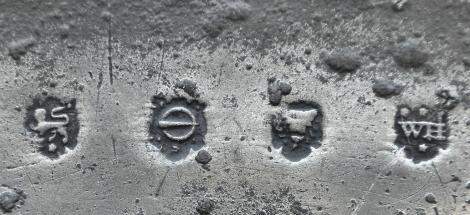Identifying and collecting pewter

Why collect British Pewter?
It has a subtle beauty, is very tactile and comes in a wide variety of shapes and sizes. It often has a soft, lustrous sheen but the colour can alter depending on the conditions it has been kept in over the years making for a more interesting display.
As it was used throughout society, from royal households to the very poorest people, it gives areal link with the past and a sense of continuity with previous owners over many centuries.
With such a wide time span and variety of goods items can be found to suit every pocket.
Like silver, it is often stamped with maker’s marks and engraved with owner’s marks which can be satisfying to identify.
It is low maintenance, being a very stable alloy, an occasional rub with a soft cloth or wash in warm, soapy water is usually sufficient to keep it looking attractive
Marks help with identification
British and Irish pewter is often unmarked. If marks are present, they can help in identifying when and where the item was made or used. Marks fall into three broad categories.
- Pewterers’ marks
- Verification and capacity marks, often including a crown over the initials of a king or queen, or the symbol of a local authority.
- Ownership marks such as stamped initials, inscriptions, monograms and coats of arms.
Marks on non-British/Irish pewter can be similar to those on British and Irish pewter, but often countries or regions had their own approach to marking.